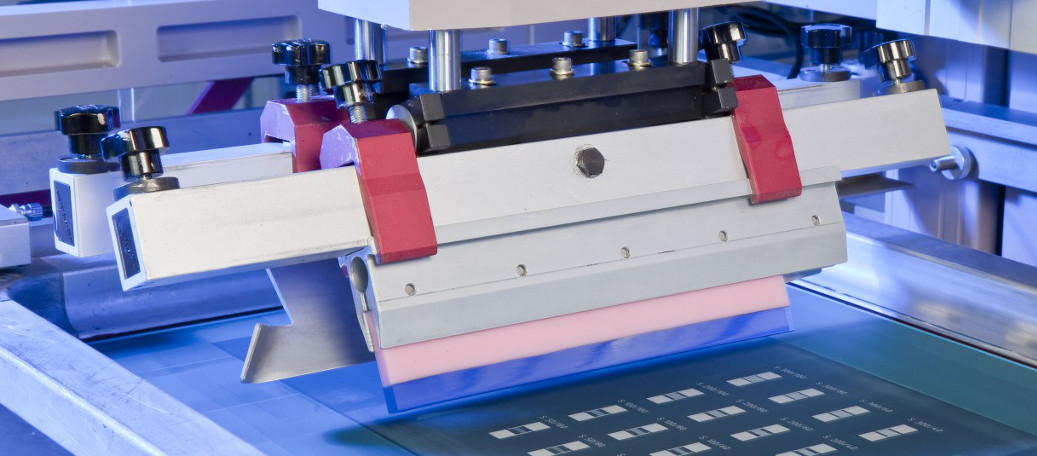Solar cells use silver in the metallic ‘fingers’ screen printed onto their front sides, that transport charge generated in the silicon out into module and subsequently into the electricity system. Some experts predict that for solar to continue on its impressive growth trajectory, the industry will soon require most of the world’s silver production in order to keep making modules.
And while alternatives such as aluminum or copper are increasingly gaining ground, reducing the amount of silver consumed per cell offers a short-term solution. Hoping to achieve this by decreasing the width of the fingers and identifying alternative paste formulations that could achieve better conductivity with less silver, scientists at Germany’s Karlsruher Institute of Technology set out to gain a better understanding of how different paste compositions behave during the screen-printing process.
Candid camera
The group equipped an industrial screen printer (manufactured by Germany company ASYS) with a camera able to capture the process at 1,000 frames per second. The process was captured with two different paste compositions and various different process parameters, and the group went on to evaluate each one, looking at both the process video and the metallized cell itself. They presented their results in “Front side metallization of silicon solar cells – A high-speed video imaging analysis of the screen-printing process,” which was recently published in Solar Energy Materials and Solar Cells.
The study showed that in many cases, current commercial pastes rely on additives to achieve required morphology and printer compatibility. But these do not burn off completely, leaving behind residuals that can reduce paste conductivity. The group also observed multiple stages within the process, including paste spreading leading to (undesirable) increased line width.
KIT plans to continue this research with more paste compositions, and will particularly focus on varying wetting and flow properties in upcoming work. “This will enable the development of rational concepts stimulating further improvements of silver paste formulation for silicon solar cell front-side metallization,” the scientists said.
This content is protected by copyright and may not be reused. If you want to cooperate with us and would like to reuse some of our content, please contact: editors@pv-magazine.com.




By submitting this form you agree to pv magazine using your data for the purposes of publishing your comment.
Your personal data will only be disclosed or otherwise transmitted to third parties for the purposes of spam filtering or if this is necessary for technical maintenance of the website. Any other transfer to third parties will not take place unless this is justified on the basis of applicable data protection regulations or if pv magazine is legally obliged to do so.
You may revoke this consent at any time with effect for the future, in which case your personal data will be deleted immediately. Otherwise, your data will be deleted if pv magazine has processed your request or the purpose of data storage is fulfilled.
Further information on data privacy can be found in our Data Protection Policy.